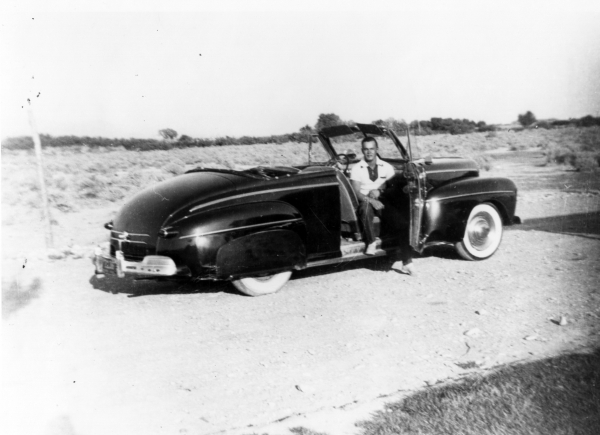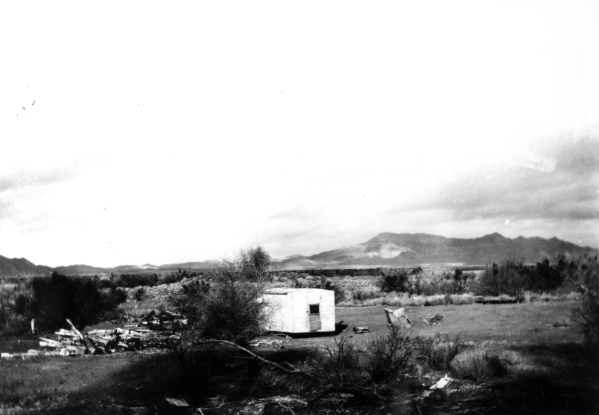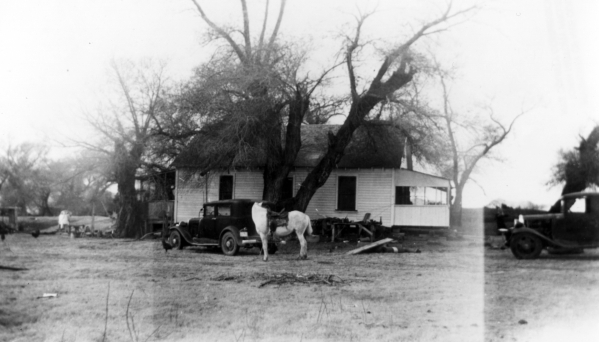Harry Ford and keeping cool in Pahrump
Harry Ford was a remarkable man. A highly skilled operator of road-maintenance equipment, he spent his entire working career, starting at 18, with the Nye County Road Department.
He was also a gifted natural-born historian.
Harry knew more about Pahrump Valley history than anyone else. Using their own financial resources, he and his wife, Mary, along with others, founded the Pahrump Valley Museum in 1992. I conducted a formal oral history with Ford in the spring of 1988 and another series of interviews prior to his passing in 2011. Together, they are a treasure trove of information on life and times in Pahrump Valley.
Harry Ford's parents, Stanley and Hattie, were both born and raised in Bloom City, Wisconsin. In 1925, weary of the cold upper Midwest winters, the couple packed the family's belongings in a Model T Ford and, with their firstborn child, headed for California.
They ended up in Fallbrook, halfway between Los Angeles and San Diego, where Stanley drove a truck to make a living. Harry, the couple's fifth and last child, was born in Los Angeles in 1937, and grew up with four older sisters.
The Fords had always wanted to farm their own land so they tried dry-land farming on a homestead out of Searchlight. When World War II broke out, they moved to Yermo, California, where Stanley worked on construction of military bases in the Yermo and Barstow area.
Move to Pahrump
In 1944 the Ford family heard about the Pahrump Valley in southern Nevada and its wonderful artesian wells and springs. They soon moved there, occupying the Raycraft Ranch, located on Wilson Road. They stayed on the Raycraft place for eight years and farmed.
They lived in a large white house on the ranch that had been constructed with materials from buildings torn down at Johnnie.
When the Fords arrived in Pahrump in 1944, Harry recalled there were three large ranches in the valley. The largest was the 12,000-acre Pahrump Ranch, of which 500 or 600 acres were farmed. The Manse Ranch was the second largest and also had grazing range in the Charleston Mountains. Lois Kellogg's ranch was the third largest in the valley. When Kellogg passed away, her ranch was incorporated into the Manse Ranch. Frank "Pop" Buol also had a ranch, which by 1988 was part of the Binion Ranch.
Summer Heat
Life was not easy in Pahrump Valley in 1944. It was very isolated and there was always a lot of hard work to be done. If you wanted electric power you had to generate your own. And the summers were hot.
Harry said that all the ranches in those days, including the Raycraft place, had big trees. "If you hadn't had the trees," he said, "I don't know how you survived."
People, of course, worked in the sun, but they wore big hats and drank lots of water and would sweat. They worked in the early part of the day and typically not in the heat of the afternoon.
"But the trees were how you survived through the daytime," Ford said.
"Now, we are talking about the daytime," he emphasized. At night, "The trees work in the other direction. They hold the doggone heat." As a consequence, every house had lots of windows that were kept wide open in the summer to catch any breeze. Any wind at all "was a godsend." The windows, of course, had screens to keep out the mosquitoes, which were abundant due to, as Harry put it, "a lot of water around here."
In the summer, from around early June through mid-September, Harry's parents didn't sleep in the house. While the family was still living in California, Stanley Ford had taken an old automobile, perhaps a Buick, and stripped it down to its frame, leaving only the wheels. He put a plywood floor on the frame, then built a plywood cabin on top of the floor. The cabin was about seven feet wide and 20 feet long with a door, windows, and, of course, window screens.
When the family lived in the Yermo area, Stanley Ford towed his "trailer house" to job sites in the area. When the family moved to Pahrump, they brought it with them. Once the weather heated up, Stanley towed his trailer house out from under the trees and he and Hattie slept in it. That way they could get more air and the screened windows kept the bugs out.
When it came time to shuck the hay, Stanley took the cabin off the frame and used the vehicle as a hay wagon. He pitched hay onto it while young Harry and his sisters stomped it down.
About that time, the Pahrump Ranch owners built two new houses on that property. Two sides of both houses had screened-in porches where people slept in hot weather. The screened-in porches were located on the south and west sides of the houses to take advantage of the summer sun being farther north and its early rising in the east.
Harry said that as a kid, he didn't pay much attention to the summer heat in Pahrump. A major reason was the presence of little nearby ponds to play and cool off in. "We spent a lot of time in the summer," he said, "going out and jumping in those ponds." The artesian water wasn't cold, but was "cool and nice." Stanley Ford was aware of the advantages of the ponds. Every night in the heat of the summer he would go out and jump in the pond before going to bed. He'd get cooled down and go right to sleep.
In the early 1950s, Pahrump farm operators began putting in diesel-powered generators. Before that, some people had small generators, which they called light plants. By the time Harry and Mary Ford married in 1958, some people in Pahrump had swamp coolers. Harry and Mary's small propane-powered generator would run an electric washing machine and a swamp cooler, but not at the same time. After electricity came in in 1963, everyone had swamp coolers.
No more sleeping in homemade trailers.
Bob McCracken has a doctorate in cultural anthropology and is the author of numerous books in the Nye County Town History Project, including a history of Pahrump.



















